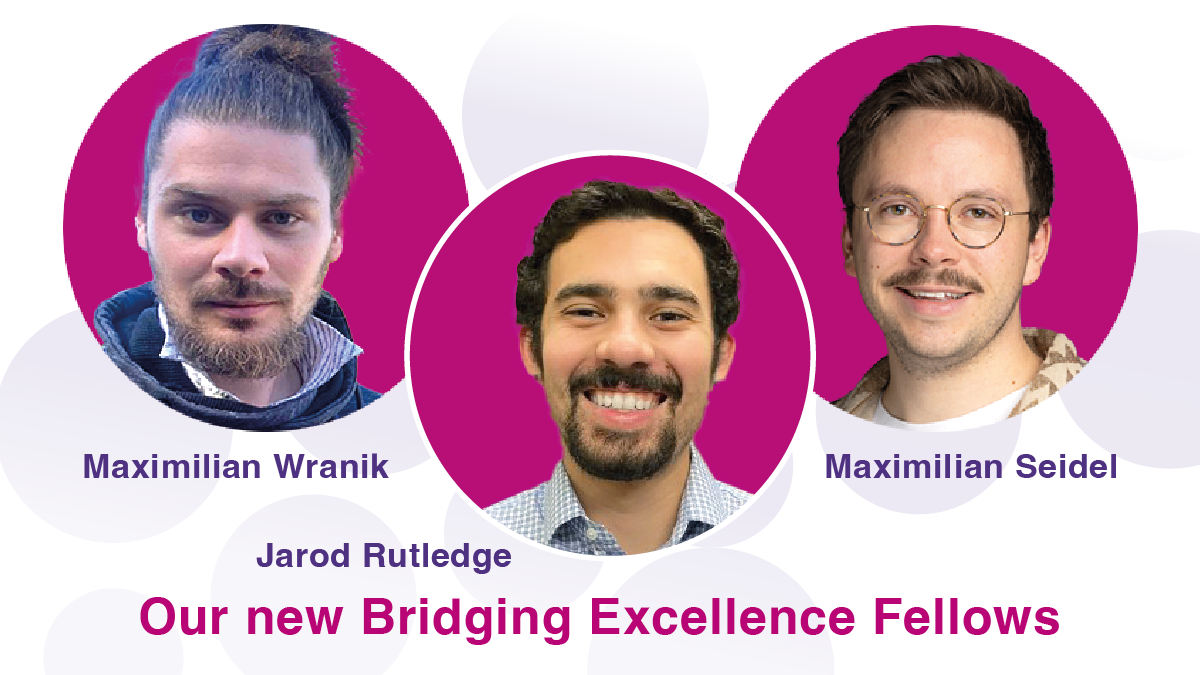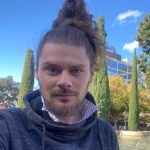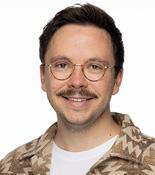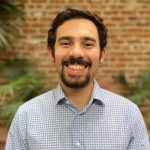The third group of Bridging Excellence Fellows has commenced their postdoctoral positions.

For the first time, the Life Science Alliance has awarded postdoctoral fellowships to researchers based at both sides, with two fellows now based at Stanford one at EMBL, collaborating on joint projects between EMBL and Stanford University.
Each fellow spends three years at their primary institution, with extended visits to the partner institution. This arrangement enables them to immerse themselves in diverse scientific environments, fostering international collaboration and enhancing their global profile. In addition to the three-year fellowship, the researchers receive financial support for consumables, travel expenses for their visits abroad, and participation in international conferences.
We are delighted to introduce our third generation of Bridging Excellence Fellows:

Maximilian Wranik, with Kacper Rogala (Stanford) and Gergely Papp (EMBL)
“Watching protein/protein- protein/ligand-interaction dynamics within the mTOR signaling pathway resolved in time and space”
In order to comprehensively understand the functional intricacies of biomolecules, structural biology must shift its gaze from static representations to capturing the dynamic interplay of proteins and ligands, providing a more nuanced insight into molecular behaviors. This ambitious pursuit thrives on the synergy of diverse creative minds, each contributing unique perspectives and insights, breaking free from geographical and cultural confines to shapes a global network of research excellence. “Research has evolved into an increasingly collaborative and global undertaking, with scientists and institutions from diverse backgrounds joining forces to address complex challenges, share expertise, and accelerate the pace of discovery,” said Max.
“The fellowship provides me the amazing opportunity to embark on an exciting scientific adventure as an integral part of both, a biochemistry group in Stanford and an engineering group in Grenoble”.

Maximilian Seidel, with Lars Steinmetz (EMBL), Mischa Savitski (EMBL) & Judith Frydman (Stanford)
“Co-translational nascent chain modifications and their adaptation to cellular stress”
“The Life Science Alliance Postdoctoral Fellowship enables me to perform cutting-edge research on the currently underexplored topic of co-translational protein modifications.” said Max. “We will be able to provide more inside into the virtually unexplored question of the occurrence and function of co-translational protein modifications by integrating several techniques spearheaded at EMBL and Stanford.” Max performed his predoctoral work at the Max Planck Institute of Biophysics focusing on the co-translational biogenesis of the nuclear pore complex and the co-translational targeting of nuclear proteins by importins in collaboration with GeneCore at EMBL. During this time, he had noticed that co-translational protein modifications have been identified and described for some time, however their function and impact on the nascent proteome is still debated.
“In my experience, being a part of three labs with different research expertise challenges my research driving new creative approaches to tackle the concept of co-translational protein modifications, which will help the project to take off.”

Jarod Rutledge, with Lars Steinmetz (Stanford) and Anna Kreshuk (EMBL)
“Unlocking the potential of image cell sorting for functional genomics and cell biology”
The quest to dissect complex cell states and understand the interplay between genome function and cellular phenotype underlies many of the ‘big unknowns’ in life sciences today. A major bottleneck to our understanding is the rapid and faithful isolation of single cells based on complex phenotypes like age, cancer, stress, transcriptional profiles, or genomic states. Jarod’s research combines artificial intelligence with newly developed imaging and cell sorting technologies to solve this critical bottleneck. “The goal is really to create a technology that will help biologists of all kinds perform new kinds of high-throughput experiments. I think the sky is the limit here” says Jarod. He plans to use the new technology to work out how different cells age in the human body.
“Stanford and EMBL are both leaders in the fields of AI, functional genomics, and cell imaging. It’s really exciting to work with so many talented colleagues on big problems in biology”
Charting the Course of Global Science
Having the opportunity to combine the expertise from labs at both Stanford University and EMBL presents a truly unique and enriching experience. It offers the fellows the chance to delve into two distinct academic cultures, each renowned for their cutting-edge research and innovative approaches.
“One of the most compelling aspects of being a Bridging Excellence Fellow is the ability to bridge the gap between these prestigious institutions, forging connections and collaborations that transcend geographical boundaries” says Lars Steinmetz, the director of the Life Science Alliance. This collaborative environment fosters a dynamic exchange of ideas, methodologies, and perspectives, ultimately leading to groundbreaking discoveries and advancements in various fields of study.